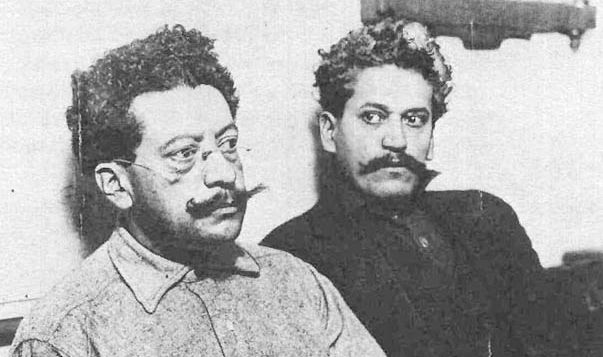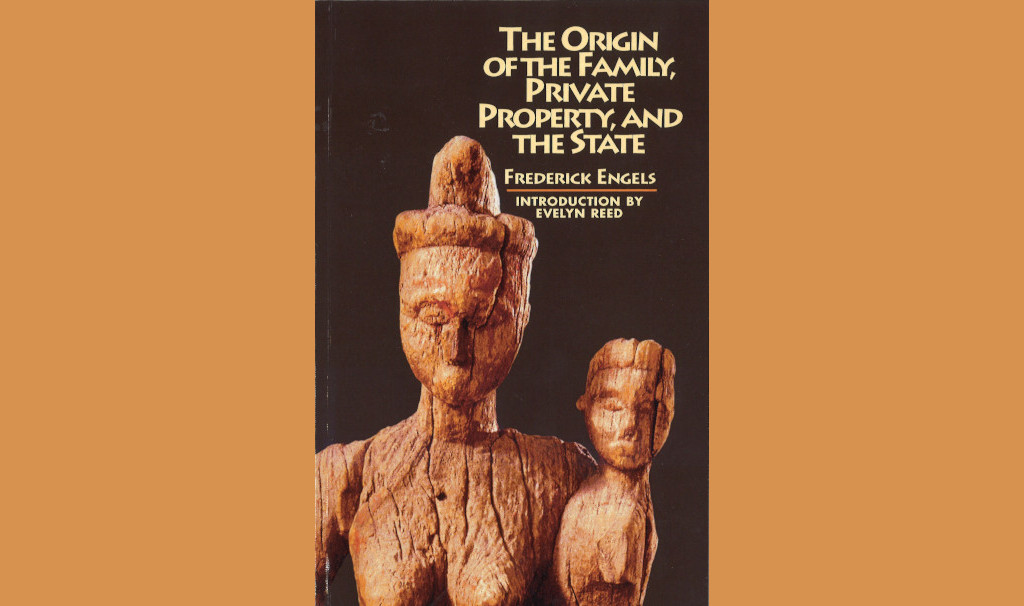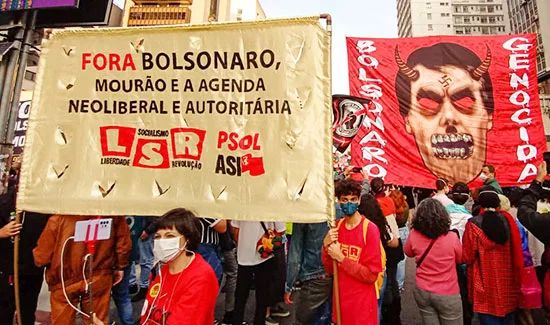Mauro Espinola is a member of Alternativa Socialista (ISA in Mexico).
The first of a series of articles that seeks to clarify and outline the nature of the Mexican Revolution from a class point of view.
November 20 marked the 110th anniversary of the beginning of the Mexican Revolution of 1910, in which thousands of peasants and workers, men and women, fought to transform their reality. In doing so they demonstrated the revolutionary potential of the oppressed in struggle. The example and depth of the Mexican Revolution was such that its echoes even reached the revolutionary Russia of Lenin and Trotsky.
However, the regimes that emerged after the end of the military period (1910–1917) used the Mexican revolution as a means to legitimize themselves. They built a revolutionary rhetoric that was far from fulfilling the demands and causes for which thousands gave their lives on the front lines. This has generated great confusion about what the Mexican Revolution was, which this article seeks to clarify and outline from a class point of view. In this way we want to remedy in part the ideological, political and historical confusions with a view to clarifying and reclaiming the legacy of the struggle of thousands of peasants and workers in the fight for their emancipation.
From Independence to Reform
The demand for land was central to the revolutionary struggle, being the main cause for which thousands of peasants – the largest component of the revolutionary battalions — joined “la bola” (the ball), as the revolutionary struggle was then called. Indeed it was so crucial that it would be the fundamental reason for the Liberation Army of the South, led by Emiliano Zapata to break with Francisco Madero’s provisional government in 1911, highlighting the failure to implement the demand for agrarian distribution – the central slogan of the revolution of November 20, 1910. The fact the demand was not met would be the main reason for the prolongation of the armed struggle for more than seven years. It would even be the cause of various peasant uprisings during the 1920’s and 30’s, and would only begin to be partially resolved with the government of Lazaro Cardenas in the second half of the 1930s.
This demand arose from the agrarian character of Mexican capitalism at the end of the 19th and beginning of the 20th century, in which thousands of human beings were converted into “peones acasillados” (a form of indebted servitude) in large estates. As an agrarian capitalism it was fundamentally oriented towards providing raw materials to the United States, France and England, the industrial nations of the time. The haciendas were the central productive unit of Mexican capitalism during the 19th century and the first decades of the 20th century. These were characterized mainly by their extensive production, that is, agricultural production from great land properties and little technological or capital investment.
These productive units therefore required an enormous extraction of unpaid work from their workers: the “acasillados.” They were forced to work from sunrise to sunset in semi-slavery conditions by means of the “tienda de raya” (company store), which consisted of paying low wages by means of coins or checks that could only be exchanged for survival products in the stores of the haciendas where one worked. Of course, the prices of the products were excessive, so the workers were forced to contract debts with the landowners of the estates where they worked – the very people who owned the stores. In this way they were trapped: forced to live in debt to the landowners, they were therefore semi-slaves of the haciendas. Consequently, the landlords would also be the main target of the hatred of the revolutionary armies, which saw in them the representation of peasant oppression and for which they would be plundered and destroyed during the revolutionary battles.
The development of the haciendas as the central productive unit of Mexican capitalism in the 19th century was the result of a twofold situation. On the one hand, a consequence of the international division of labor that produced the industrial revolution, in which Latin America and Africa fundamentally became suppliers of raw materials; and, on the other hand, as a consequence of the class relations that resulted from the Revolution for Independence. It may seem strange to present the results of Independence as one of the roots of the Mexican revolution. Yet, despite the apparent temporal distance between both processes, the historical proximity is closer than it seems: precisely because the land ownership relations that emerged from Independence were those that would be challenged in the 1910 revolution.
The conquest and subsequent colonial period in New Spain (at the time Mexico and part of Central America) established a Creole-dominated property regime with characteristics more or less similar to those of the haciendas in productive terms, although without their more brutal expression of the “tiendas de raya”. Thus, the Revolution for Independence, whose political leadership was primarily the Creole children of Spaniards born in New Spain, was an attempt to recover the privileges lost after the Bourbon Reforms that sought to increase tax collection for the benefit of the Spanish crown.
However, by the end of the Revolution for Independence, property relations had remained untouched. The Creoles (people of direct Spanish descent) thus continued to own the large land properties accumulated during the colonial period. Along with them, the other great owner of land was the Church, as a consequence of the payment of their religious services and the appropriation of intestate goods. The conflict between liberals and conservatives after the Revolution for Independence can be explained by the above. The conservatives were the old Creole oligarchy that had managed to get rid of the weight of the crown, but without substantially altering the social and economic situation of the masses. The liberals were made up of educated but poorer sections of society that had participated in or inherited the struggle of the 1810–1821 Revolution for Independence. They adopted the liberal program as a means to, from their perspective, make the necessary changes to satisfy the needs of the masses. This is why 19th century Mexican liberalism acquired very different social characteristics to those of European or North American liberalism which were clearly the program of the economic elites that emerged from the industrialization of the economy.
The War of Reform, between 1857 and 1861, and the restoration of the Republic in 1867, after the French Intervention, are precisely the triumph of the liberals against the old Creole oligarchies who sought to establish an economic and political program that would favor the popular masses through a series of measures of economic and social liberalization set forth in the Reform Laws. Although these liberal reforms, bourgeois-democratic in a way, fractured the oligarchic creole regime, they did not bring about substantial changes in property relations.
In the context of the development of imperialism in the second half of the nineteenth century, the same processes that increased the accumulation of large land holdings worsened the situation of the poorest.
El Porfiriato: Agro-export capitalism
The consolidation of the liberal project, and the arrival of Porfirio Diaz to power in 1876, are the years in which the railroad is extended and consolidated in Europe and the United States and begins to be built in Mexico. This became a means of transporting goods, stretching northward to the United States for the export of raw materials such as coal, iron ore, cotton, coffee, sugar and others and to the port of Veracruz for overseas exports to mainly England and France. It is precisely the context in which the hacienda and the company store appear as a productive unit in accordance with the technological backwardness of the Mexican economy, but which yields great dividends to the landowning bourgeoisie. The Maderos, the Creels or the Terrazas, are examples of those landowning families who will benefit from extensive low-investment farming with enormous profits. In fact, the Maderos went from being a purely landowning family with large land holdings dedicated mainly to cotton cultivation to becoming a capitalist industrial family. Francisco Ignacio Madero himself was known before the revolution of 1910 as “the king of denim” for owning some of the factories that exported this textile, mainly to the United States.
Of course this growing capital investment, especially from the construction of the railroad, changed the composition of Mexican capitalism at the end of the 19th century. This was done through the growing investment, or export of capital, from the most developed countries to Mexico: the United States, France and England. Porfirio Díaz himself, despite his clear sympathy for France, used this imperialist rivalry, making investment links with different nations in order to stay in power for so long.
These investments, although oriented to various productive sectors such as agriculture or mining, also led to a gradual and dispersed industrialization of the country, especially in the textile, mining-metallurgical and chemical sectors, especially the petrochemical sector. Thus, a working class grew and strengthened in different states of the country, such as Puebla, Tlaxcala, Veracruz, Tamaulipas and Mexico City, although it didn’t manage to surpass the agricultural and peasant workers until well into the 20th century. That is, despite the development and strengthening of the Mexican working class at the beginning of the 20th century, it would be a minority compared to the peasants. But it would also be one of the first protagonists in the struggles that announced the coming upsurge of the masses: the strikes at the Cananea mine in 1905 and in the Río Blanco textile factories in 1907.
The importance of both strikes is not anecdotal. On the contrary, both would contribute to the influence of the Mexican Liberal Party among the workers and peasants, and to the development of their political demands, which would later be partially expressed in the 1917 Constitution. The case of the Río Blanco strike is clear in this regard, because besides the long and exhausting workdays, children and women were forced to work in the chemical processes of dyeing textiles without any protection. Dozens died as a result of chemical poisoning. When the strike broke out in 1907, the outrage against this situation was expressed in the demand for the prohibition of child labor along with the reduction of working hours for adults.
These demands would be fought for together with the distribution of land during the armed conflict and would be expressed at various times, among them the Querétaro Constituent Assembly of February 1917.
In both strikes, the participation of the Mexican Liberal Party (PLM) led by the brothers Ricardo and Enrique Flores Magón, Juan Sarabia and Práxedis Guerrero, was fundamental. Founded in 1905, the PLM had managed to influence diverse workers’ circles, which turned the party and its newspaper Regeneración (Regeneration) into true instruments of the Mexican working class. Indeed both the Cananea and Rio Blanco strikes were organized and propagandized through Regeneración and in each case its representatives would become the leaders. Both strikes were brutally repressed by the Porfirio Díaz regime, with dozens of deaths. But from then on, the name of Regeneración and the Flores Magón brothers, Juan Sarabia Práxedis Guerrero and other militants, all of them members of the PLM, would become a cherished symbol of the oppressed and of revolutionaries throughout the world.




